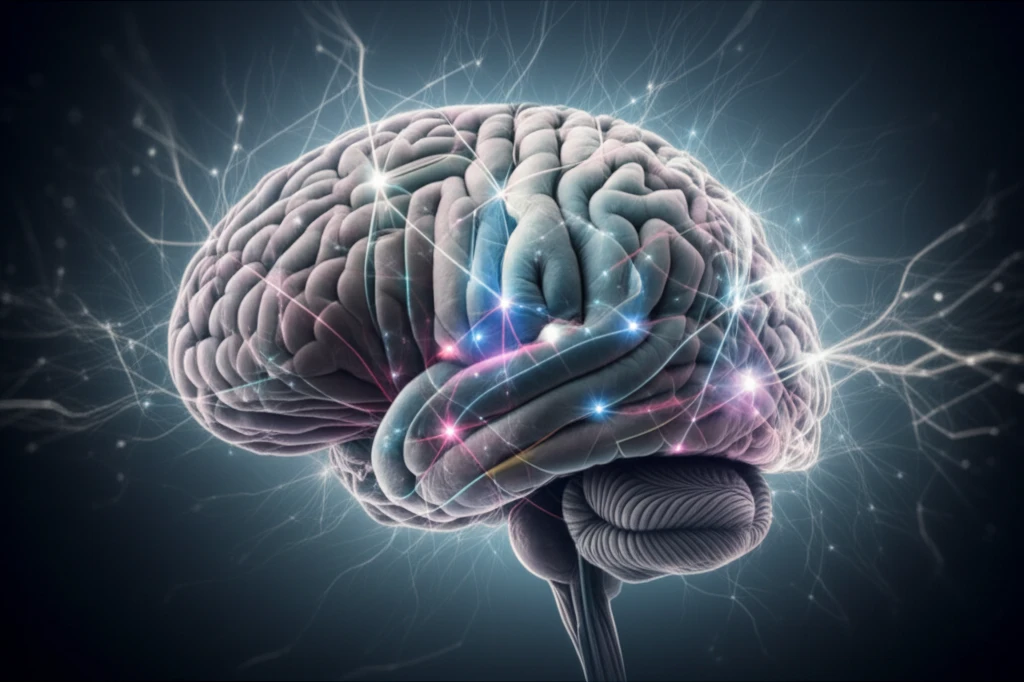
Schizophrenia's Silent Struggle: Unveiling the Brain's Hidden Connections to Negative Symptoms
"New research illuminates how disrupted communication between brain regions may explain the motivational and emotional challenges faced by individuals with schizophrenia."
Schizophrenia is a severe mental illness marked by two distinct categories of symptoms: positive and negative. While positive symptoms like hallucinations and delusions are often the focus, negative symptoms – including reduced motivation, social withdrawal, and blunted emotions – significantly impact daily life and long-term well-being. These ‘silent struggles’ are also notoriously resistant to treatment, making them a critical area of research.
One promising avenue for understanding negative symptoms lies in exploring the brain's intricate communication networks. Scientists have long suspected that disruptions in how different brain regions connect and interact play a key role in schizophrenia. In particular, the communication highway between the frontal cortex (responsible for higher-level functions) and the striatum (involved in motivation and reward) has garnered attention.
Now, a new study from researchers at the University of Maryland School of Medicine sheds light on this crucial connection. By examining the resting-state brain activity of individuals with schizophrenia, the study reveals specific disruptions in frontostriatal connectivity that are linked to the severity of negative symptoms. These findings not only deepen our understanding of the neurobiological underpinnings of schizophrenia but also pave the way for more targeted and effective treatments.
Decoding the Disrupted Pathways: How Brain Connectivity Impacts Negative Symptoms

The research team, led by Dr. Dinesh K. Shukla, used resting-state functional connectivity (rsFC) data from 95 participants with schizophrenia and 139 healthy controls. This technique allowed them to examine how different brain regions communicate with each other when the brain is at rest, without the influence of specific tasks. Negative symptoms were carefully assessed using the Brief Negative Symptom Scale (BNSS).
- Right medial orbitofrontal cortex (mOFC): Critical for social evaluation, decision-making, and emotional representation.
- Right lateral orbitofrontal cortex (lOFC).
- Lateral prefrontal cortex (lPFC).
- Rostral anterior cingulate cortex.
A New Path Forward: Targeting Brain Circuits for Improved Outcomes
This study provides compelling evidence for the role of disrupted frontostriatal connectivity in the emergence of negative symptoms in schizophrenia. By pinpointing the specific involvement of the right mOFC and ventral striatum, the research offers a more precise target for future interventions.
While the study highlights a significant link, further research is needed to fully understand the direction of causality and the potential influence of medication. However, the findings open doors to exploring novel therapies aimed at strengthening these weakened brain connections. This could involve targeted brain stimulation techniques, cognitive training programs designed to enhance mOFC function, or pharmacological interventions that promote healthy dopamine signaling within the striatum.
Ultimately, by focusing on the underlying neural circuitry of negative symptoms, researchers and clinicians can work towards developing more effective and personalized treatments that address the full spectrum of challenges faced by individuals with schizophrenia, leading to improved quality of life and a greater sense of well-being.
